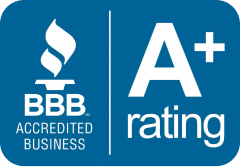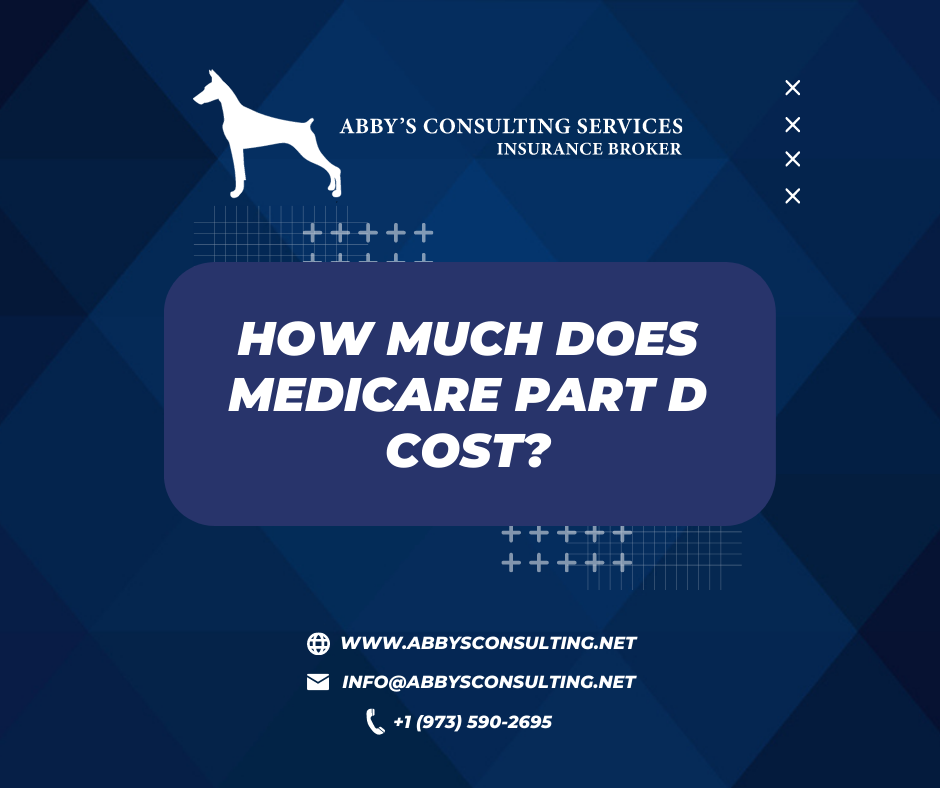There are fines if you enrol later in Medicare Part D, and premium costs vary by provider.
Medicare Part D plans, usually referred to as Medicare drug plans since they cover prescription medicines, have varying monthly premiums. The Centers for Medicare & Medicaid Services estimates that the national base beneficiary premium for Part D plans will be $33.37 per month in 2022 ($32.74 in 2023), partly based on the national average monthly bid amount provided by private insurers.
Your initial expenses, however, could be significantly greater or cheaper depending on the plan you select. In 2022, the Kaiser Family Foundation estimates that monthly plan premiums will range from $5.50 to $207.20. If you enrol after the deadline, have a long drug coverage gap, or have a high taxable income, there are additional fees.
What is Medicare Part D?
The Medicare prescription drug benefit is known as Part D. In contrast to Original Medicare Parts A or B, which provide inpatient and outpatient medical insurance, respectively, it helps pay for the price of outpatient prescription medicines.
Part D plans are issued by private insurance companies that have agreements with the federal government, as opposed to the government directly providing Parts A and B.
If you choose Original Medicare, adding a Part D plan increases your overall health insurance protection by include crucial prescription coverage. If you have a Medicare Advantage plan that includes prescription coverage, you do not require a separate Part D policy. (In most circumstances, you cannot purchase a stand-alone Part D plan if you purchase a Medicare Advantage plan without drug coverage.)
The parts of Medicare
Learn more about the many components of Medicare and the coverage they .
- Medicare Part A (hospital insurance).
- Medicare Part B (medical insurance).
- Medicare Part C (Medicare Advantage).
- Medicare Part D (prescription drug plan).
- Medicare Supplement Insurance (Medigap).
Are Part D plans expensive?
In general, no – at least not when compared to average Part B rates, which for the majority of Medicare participants will be $170.10 per month in 2022 ($164.90 in 2023) However, unlike Part A, these Part D plans have premiums, and some of them can be pricey.
The deductible and premium are set by each plan independently. Although you can pay an insurance company directly by having these premiums withdrawn from your Social Security check, this isn’t always the best choice. Every year, drug insurers frequently alter which medications and how much are covered. In order to get your prescriptions covered at the best price, you must search around for a new drug plan or Medicare Advantage prescription drug plan every year because pharmacies frequently alter their preferred status.
It is more effective to set up automatic payments directly with your Part D insurer than than going through the slow and cumbersome process of setting up payments through Social Security and maybe switching plans while utilising Social Security payment.
Plans with cheaper premiums typically have higher deductibles. However, no plan may charge more than the cap set by the CMS. The annual maximum deductible in 2022 is $480. Although the initial premium payment may be less, the coverage won’t begin until you have met the deductible. However, if you have insurance, your medications are frequently priced favourably. The Medicare plan discovery tool allows you to view your personal prescription drug prices, premiums, and deductible.
Plan D costs to keep in mind
Make sure you are aware of the fees associated with the Part D plans you are considering.
- Premium: The monthly payment required for the prescription plan.
- The sum that must be paid out-of-pocket before your insurance plan will cover the cost of any drugs that are covered.
- Drug costs: If you often fill prescriptions, you can check how much each drug will cost under the plan at the pharmacies you choose.
Make important to consider all three levels of cost when making your choice; you might find that while drug expenses are cheaper on one plan, your monthly premium expense is more than it would be on a similar plan. You should base your choice on the total of the three components.
Are there additional costs for high-income earners?
You’ll have to pay an additional fee for your Medicare Part D insurance if your income is beyond a specific threshold. The Part D Income-Related Monthly Adjustment Amount, or Part D IRMAA, is a surcharge that is paid to the insurance provider separately and goes by the name of Part D.
Whether they select a Medicare Part D plan or a Medicare Advantage plan that offers prescription drug coverage, high-income earners are required to pay the Part D IRMAA. The Part D IRMAA is typically taken out of your Social Security check and is never paid to your insurance provider. You will pay the additional fee directly to the Social Security Administration if you are not currently receiving Social Security payments.
2022 Medicare Part D IRMAA
If your modified adjusted gross income for filing a single tax return in 2020 was more than $91,000, or $182,000 for filing jointly, you will owe a Part D IRMAA in 2022. (Your current-year premiums are determined by your prior-year tax returns and your income from two years ago.)
For information on the 2022 Part D IRMAA, see the table below:
Individual tax return (2020 income) | Married filing jointly (2020 income) | Married filing separately (2020 income) | Monthly Part D cost (in 2022) |
|---|---|---|---|
$91,000 or less. | $182,000 or less. | $91,000 or less. | Your plan premium. |
Above $91,000 up to $114,000. | Above $182,000 up to $228,000. | Not applicable. | $12.40 plus your plan premium. |
Above $114,000 up to $142,000. | Above $228,000 up to $284,000. | Not applicable. | $32.10 plus your plan premium. |
Above $142,000 up to $170,000. | Above $284,000 up to $340,000. | Not applicable. | $51.70 plus your plan premium. |
Above $170,000 and less than $500,000. | Above $340,000 and less than $750,000. | Above $91,000 and less than $409,000. | $71.30 plus your plan premium. |
$500,000 or above. | $750,000 or above. | $409,000 or above. | $77.90 plus your plan premium. |
Source: Medicare.gov
2023 Medicare Part D IRMAA
If your modified adjusted gross income on your 2021 tax return exceeded $97,000 if you filed separately or $194,000 if you filed jointly, you will owe a Part D IRMAA in 2023.
Details for 2023’s Part D IRMAA are listed in the table below:
Individual tax return (2021 income) | Married filing jointly (2021 income) | Married filing separately (2021 income) | Monthly Part D cost (in 2023) |
|---|---|---|---|
$97,000 or less. | $194,000 or less. | $97,000 or less. | Your plan premium. |
Above $97,000 up to $123,000. | Above $194,000 up to $246,000. | Not applicable. | $12.20 plus your plan premium. |
Above $123,000 up to $153,000. | Above $246,000 up to $306,000. | Not applicable. | $31.50 plus your plan premium. |
Above $153,000 up to $183,000. | Above $306,000 up to $366,000. | Not applicable. | $50.70 plus your plan premium. |
Above $183,000 and less than $500,000. | Above $366,000 and less than $750,000. | Above $97,000 and less than $403,000. | $70 plus your plan premium. |
$500,000 or above. | $750,000 or above. | $403,000 or above. | $76.40 plus your plan premium. |
Source: Medicare.gov
What about the Part D late-enrollment penalty?
If you don’t sign up for Part D coverage before the end of your initial enrollment period, which is the seven-month period beginning three months before the month you turn 65, or if you’ve gone 63 days or more without acceptable prescription drug coverage, Medicare will charge you a late enrollment penalty. This fine is in addition to the price of your monthly premium and is applicable as long as your Medicare medication coverage is still in place.
For each month that you were qualified to enrol but didn’t, you will be penalised 1% of the national base beneficiary premium ($33.37 for 2022). The total number of months is unlimited. A 72% penalty will be assessed if you believed you didn’t require a Part D plan since you weren’t using any prescription medications, but then needed one 72 months later when the medication was expensive. For the remainder of your retirement, it will be applied each month.
Here’s how it works:
M is the number of full months during which you were eligible for drug coverage but were not enrolled in it. The national base beneficiary premium, or NBBP, in 2022 will be $33.37.
Monthly fine = NBBP x (M x 1%).
To the closest 10 cents, the result is rounded. The national base beneficiary premium is subject to annual adjustment, which could result in an increase in the monthly penalty you are required to pay.
Here’s an example:
Let’s say you waited another 24 months after your initial enrollment period ended to purchase prescription drug coverage.
(24 x 1%) times $33.37 is the monthly penalty. After rounding, the monthly penalty equals $8.01, or $8.
This might not sound like much, but it adds up to $96 annually, and if the national base beneficiary premium increases, the cost may increase over time.
How to avoid the Part D late-enrollment penalty
- As soon as you are qualified for Medicare, sign up for Medicare Part D or a Medicare Advantage prescription drug plan.
- Enroll in Medicare medication coverage right away if you’ve lost your prescription plan owing to a change in employers or the plan’s discontinuation.
- Keep thorough records of your past experiences with prescription insurance so you can demonstrate a history of ongoing coverage if necessary.
You can ask for a reconsideration if you believe Medicare has fined you in error. In order to respond, you must send the supporting paperwork within 60 days after the day you get notice of the penalty. Usually, it takes 90 days to get a decision.
Medicare Advantage providers
Learn more about some of the top Medicare Advantage providers in the sections below. In most states, these insurers have plans available. Your county and ZIP code will determine which options are available to you.
AARP Medicare Advantage plans.
Aetna Medicare Advantage plans.
Anthem Medicare Advantage plans.
Blue Cross Blue Shield Medicare Advantage plans.
Cigna Medicare Advantage plans.
Humana Medicare Advantage plans.
Kaiser Permanente Medicare Advantage plans.
UnitedHealthcare Medicare Advantage plans.
Wellcare Medicare Advantage plans.








